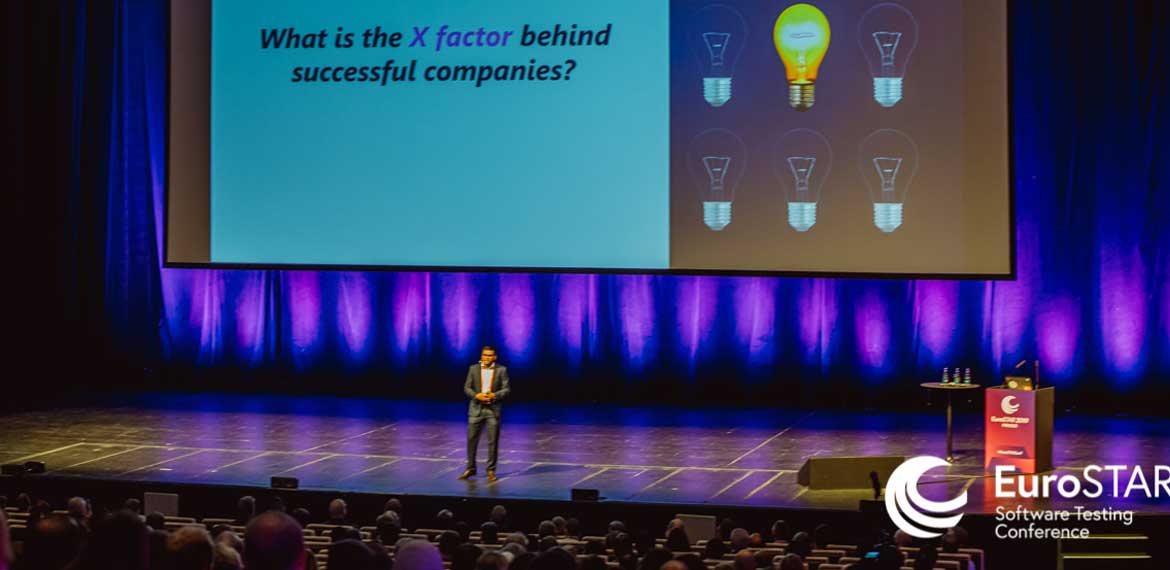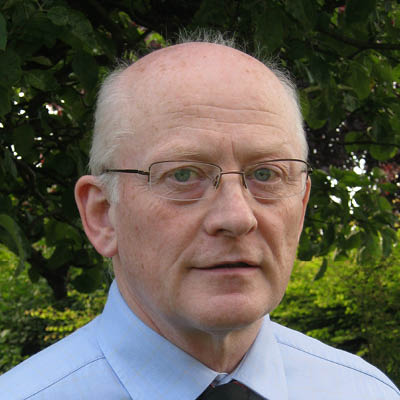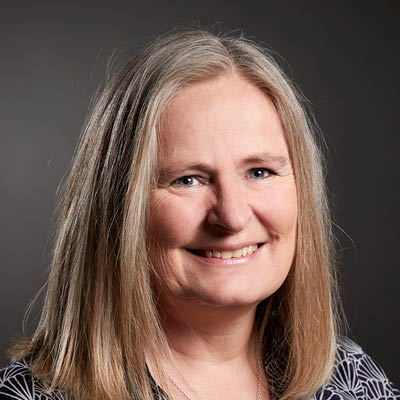
Want to become a better speaker? Create that perfect presentation to blow your audience away? We’ve got you covered. Learn to speak like a pro from the people who do it best – our own EuroSTAR 2021 expert speakers, who are ready to wow our attendees this September. They’ve got lots of tips you can use to make your next presentation sing, and have you speaking like a true pro in no time – and who knows, we might see you on the EuroSTAR stage in the near future…
Check out the best ways to present your information, how to achieve the ideal set-up, how and when to be ruthless when cutting out information, making the most of online presentations, and lots more.

Andrew Brown, Expleo.
EuroSTAR track talk: Software Quality and Human Factors – our next challenge
Keep it short, keep it focused. I know that all your ideas are totally brilliant, but you really do only have 20 minutes to get one idea across and embedded into your audience’s minds. With a typically tight schedule and an abundance of interesting information, you will need to be tactical about this.
Try this: Put each point you have onto a separate, rough slide, then practise talking through each slide. You will run over the 20 minutes. Now, think about your one central message, that one idea you need inside people’s minds at the end. Ask yourself – is the point on this slide absolutely necessary to that message? If not, ruthlessly cut that slide out. Also, cut it out, don’t trim it down, hoping that you can briefly cover this plus a myriad of other points. You most likely can’t.
If you think it’s tough to get your idea across in only 20 minutes, have a look at a few of the totally brilliant TED talks for inspiration; none of which are longer than this time.

Isabel Evans – Independent Consultant
EuroSTAR track talk: Who are we? What are we doing? How are we doing it?
Presenting in general: Your presentation is a distillation of what you know. Remember you have a story to tell, which needs to be gripping. But to tell that story – to make the distillation – you need to know the back-story. In other words, you have more material in your mind and your notes than you will present, because you won’t have time. Having that background will help you tell your story. Writing a paper can give you the chance to expand on your ideas. Think how J. K. Rowling built up a whole world: her notebooks have details that didn’t make it into the books, and the books have details that didn’t get to the films.
For speaking on Zoom: Take a few minutes to do your set up, as people are going to have to look at you and your backdrop for the duration of the talk. Check your camera angle, background, and appearance before you start – for example for a Zoom meeting, you can check your set-up before the meeting by having a Zoom meeting by yourself to see what you look and sound like. Use a plain background, and ensure there’s nothing that shouldn’t be visible in the broadcast. Raise your laptop/device up so it’s level with your face (I put my laptop on a shoebox) – then you won’t be filming the inside of your nose. Lighting from the side and front, not from the back, gives a good light to your face.

Gáspár Nagy – Spec Solutions
EuroSTAR tutorial: Living Documentation with BDD: Structure, Consistency, Traceability
Many speakers are much better in Q&A than presenting the topic from prepared slides, so turn this to your benefit: imagine your talk is a Q&A and think about what questions your audience would ask. Structure your talk in a way you would answer these assumed questions. You can even show or say out loud the question you are going to address as a kind of section intro. This way you can ensure that your talk will be more relevant. When you record/present the talk, imagine a person behind the camera as one who was asking the questions – it will appear more natural both for you, and your audience.

Gitte Ottosen – Key2Quality
EuroSTAR track talk: Quality is not about testing… It’s about value!
Keep it simple: Don’t try to squeeze too much in! I was really challenged with the shorter 20-minute time that works best for online talks, compared with the usual longer 40 minute in-person track session. I created a shorter presentation focused on fewer key points, took some notes, and did a dry-run or two on my own to ensure that I did not run over.
Practice: Do a couple of dry runs so that you’re certain about what you want to say, and how you’re going to get your message through. The better prepared you are, the less focused you’ll be on your notes during the presentation.
Stand up! If at all possible, stand up during your presentation 🙂 I found that I got more energy when I was standing up, and using my gestures as I would normally do in a physical presentation.
We hope that’s helped spark some ideas for your next presentation. If you want to see our speakers in action and learn some incredible new ideas for your testing, get your ticket to EuroSTAR here.